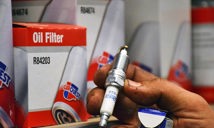If your vehicle has a gasoline-fired engine, then it has at least one spark plug screwed into the top of each one of its cylinders.
Despite having an extremely important job that’s vital to the operation of your car, the lowly spark plug is one of the most underappreciated parts of your car’s engine. Built to exacting specifications, the spark plugs in modern car engines are precisely designed to screw into the cylinder head, leaving their centre electrode and ground electrode positioned perfectly within the combustion chamber.
Thousands of times per minute, a small arc of electricity (the spark) jumps between those electrodes, igniting the air and fuel mixture within the combustion chamber, triggering the sequence of explosions that your car’s engine turns into forward momentum when you press the throttle.
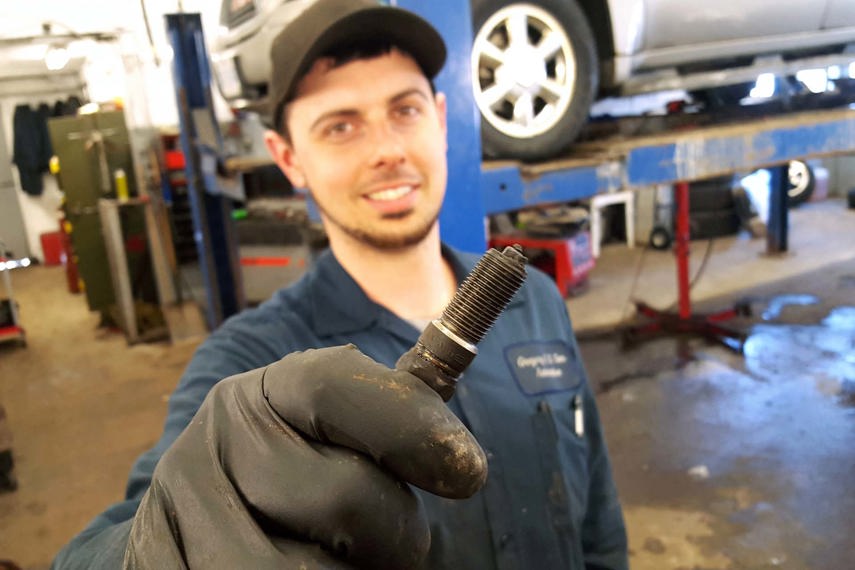
Mechanic holding worn spark plug
Like many parts of your car’s engine including belts, hoses, filters, and fluids, spark plugs will eventually wear down and require replacement. In modern engines, replacing spark plugs is a high-precision job: Worn-out spark plugs must be replaced on a preset schedule using a specifically designed plug of a very specific size, shape, and layout.
Also, the new plugs need to be fastened into the cylinder head using a precise amount of torque for proper fitment, vital to engine performance, efficiency, and the long and healthy life of the spark plugs and all associated components.
With the precise tolerances of modern engines, there’s no room for error when it comes to changing your plugs. For this reason, it’s a job that’s best left to the pros.
Of course, this doesn’t stop some folks from attempting their own spark plug change, perhaps hiring the services of a friend or family member who figures they can do the work cheaper. After all, new plugs are relatively affordable, and changing the plugs on many modern engines only requires about two or three tools and a few minutes of time, if you know what you’re doing.
What could go wrong? Turns out, plenty.
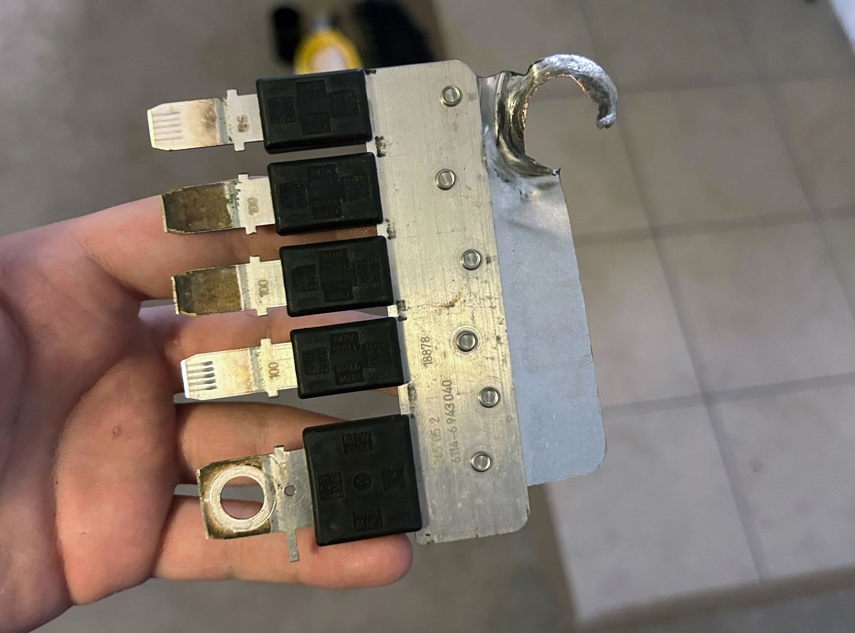
Melted electronic component. Photo by u/MadamFloof.
A proper spark plug change usually starts with disconnecting the vehicle’s battery. Forget this step, and you might be safe – or you might start a fire, cause an explosion, or, in some cases, even melt expensive electronic componentry, causing thousands of dollars worth of damage that’s not covered by warranty.
Congratulations! You saved $100 on labour, but racked up a $2,000 repair bill in the process.
Disconnecting a battery is usually a simple step. Still, if you do it the wrong way in the wrong vehicle, you could cause additional headaches, damage, frustration, or even lock yourself out of your car’s infotainment system and radio. In some cases, disconnecting and reconnecting a vehicle’s battery improperly can result in a no-start situation or wipe out programming of certain features and systems, adding to the repair bill.
Do you like surprises? If not, never disconnect the battery in your modern car before you’re sure you know what you’re doing. Planning to roll the dice? Have your favourite tow truck’s phone number handy.
because disconnecting the battery before a spark plug change is no guarantee of a safe and satisfactory job.
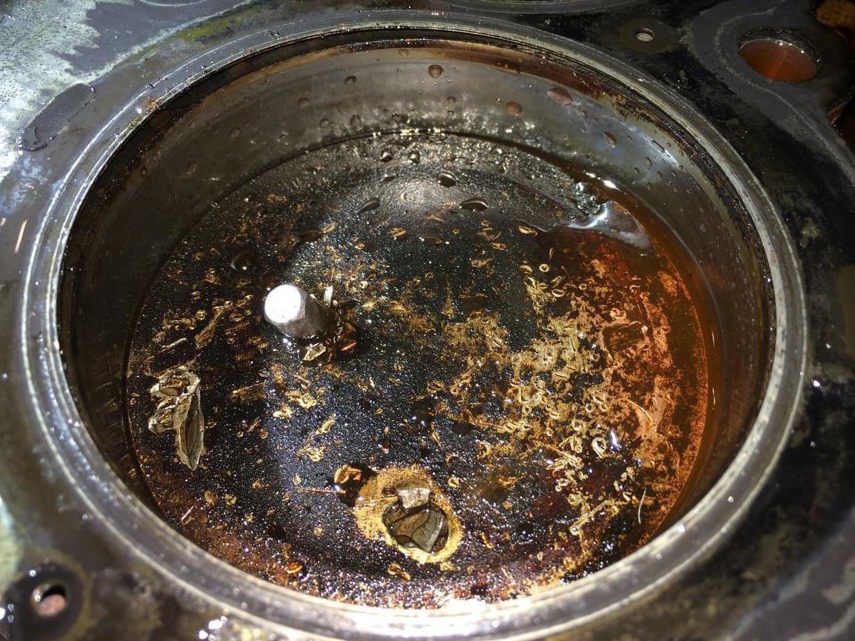
What remains of a screwdriver bit lost in the engine. Photo by u/Left4DayZ1.
Maybe your friend will change your plugs for you and maybe that friend uses a screwdriver to disconnect the screws or bolts that hold the ignition coils (the spark plug’s power source) to the top of the plugs. Maybe while removing the old plugs, that friend accidentally drops the bit from their screwdriver down the spark plug hole, where it lands on top of the piston within.
“Where’d that screwdriver bit go?” your friend wonders. “Oh well, I’ll just grab another.”
Assuming it’s been misplaced somewhere inconsequential, they simply find a new bit and complete the spark plug swap. Later, you start your engine with the screwdriver bit inside, where it immediately gets chewed up by the piston, cylinder walls, and valves spinning away rapidly within. Damage is immediate and catastrophic, your engine is ruined, its warranty is voided, and the few bucks you saved on this spark plug change balloons into an engine rebuild or replacement that runs into the thousands.
Here’s another example of an engine destroyed by the use of improperly sized spark plugs – this time, from a customer who installed spark plugs that were too long and contacted the pistons inside of the engine. When starting the engine up, one plug was smashed off within the cylinder, before the shrapnel chewed the engine up from the inside out. The engine instantly became a boat anchor, and the repair bill climbed into the thousands. Lesson learned? Just because a plug threads into an engine doesn’t mean it’s the right size.
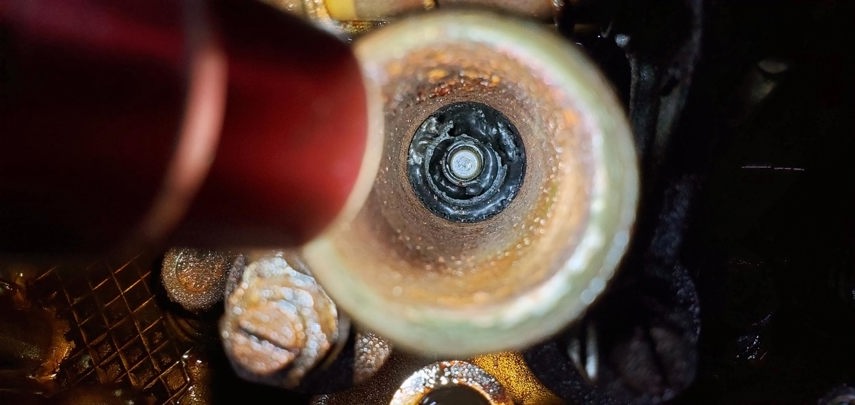
Dried gasket in spark plug tube. Photo by u/EnvironmentalCar8395.
Sometimes when changing spark plugs, a small amount of dielectric grease is used to prevent corrosion between the electrical contacts that transfer current from the ignition coils to the plugs. Dielectric grease is a specialized product that acts as an electrical insulator while sealing out moisture and corrosion. The proper use of dielectric grease can help prevent ignition and spark plug problems down the line.
In this example from a reddit post, the customer attempted to fill their spark plug boots with dielectric grease, except they used liquid gasket maker instead, which has no place on your spark plugs. Not only did this mistake cost the customer a tow truck bill when their car wouldn’t start, it also cost them a new set of plugs, a new set of wires, and an additional hour of labour for the technician to scrape the dried gasket out of each spark plug tube.
The spark created by a spark plug has to be a specific size, determined by the plug’s gap – basically the distance between the two electrode surfaces at the tip of the plug. Some plugs come pre-gapped from the factory, others require manual gap adjustment before installation using a special tool. To be clear, this gap is highly specific, non-negotiable, and has a major impact on how your engine runs, if at all.
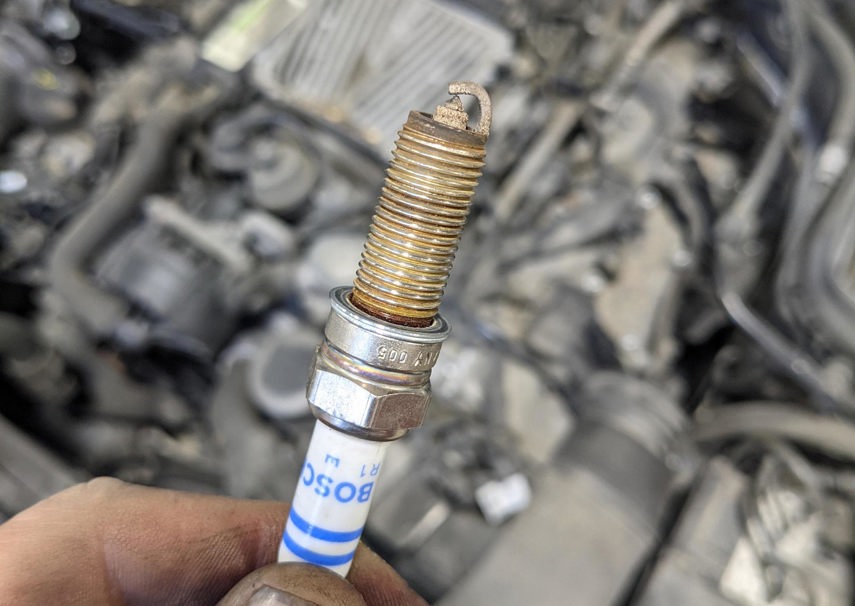
Closed spark plug gap. Photo by u/Carsonfire90.
In this example, a customer arrived with a poorly running engine shortly after a friend changed its spark plugs. The culprit? At least one spark plug had no gap at all, since its electrodes were touching. When one or more spark plugs in your engine doesn’t spark, fuel in that cylinder can’t be ignited. This results in a poorly running engine, a check engine light (CEL), and possible collateral damage to emissions systems components that don’t like when unburned fuel is sent downstream of the engine.
It’s also possible that the installer used a plug of the incorrect size, allowing the piston to slightly touch the electrode in operation, closing the gap and snuffing out that plug’s ability to make a spark. Or maybe they dropped the plug onto the ground, closing the gap, and just installed it anyway. In any case, this engine required additional repairs at the owner’s expense.
Elsewhere in the world of spark plug changes, a loose or improperly secured plug can become dislodged, blow out of the engine, fail, and cause plenty of damage to other parts and components. In extreme cases, a poorly fastened plug can even explode out of the cylinder head, taking out its ignition coil or even damaging the vehicle’s hood from the inside. In other cases, improperly tightened plugs can allow combustion gasses to escape the cylinders, quickly cooking and melting wiring, insulation, coil packs, and more.
So, while the physical process of changing spark plugs is a relatively simple “unscrew, remove, reinstall” procedure, do-it-yourself types should not underestimate the precision required at every step of the job, including the selection of spark plugs themselves, and the proper procedures required to replace them. A lot can go wrong, and if you’re not positive that you know what you’re doing, it probably will.
If in doubt, leave this job to the professionals.
